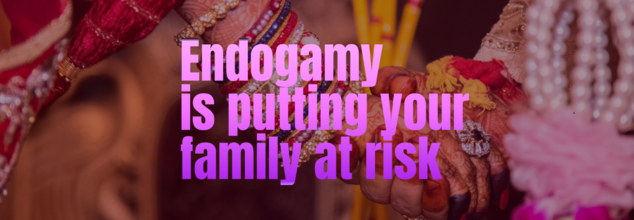- Health Conditions A-Z
- Health & Wellness
- Nutrition
- Fitness
- Health News
- Ayurveda
- Videos
- Medicine A-Z
- Parenting
- Web Stories

Experts Are Split On Whether The Internet Access Is Bad For Mental Health And Here's Why
It is a challenging and uncertain time for discourse about the internet. On the one hand, recent developments like artificial intelligence have led to a kind of aversion to digital screen time, especially since we now know just how much of the internet and social media algorithms are artificially fuelled by emotions like hate and anger. On the other hand, recent cases seem to suggest that taking away this technology isn’t leading to any benefits either.
As a parent, many eyes are on Jonathan Haidt. The author of ‘The Anxious Generation’ is currently the leading voice advocating for more awareness of the effects of smartphone technology amongst children and teens. However, as many US states move to actually enforce these bans, the science is actually showing that we aren’t seeing the mental health benefits that we are expecting.
What Is The Central DIlemma Behind This Split?
Firstly, the context behind these experts’ opinions is important to consider. Several schools in the US are starting to enforce a ban on smartphones on the campus grounds. The main reasons cited behind why is a substantive body of data from the past decade that shows that mental illnesses like depression and anxiety have been shooting up around the same time that smartphone usage became widely accepted.
Jonathan Haidt was one of the first to point out this correlation in his book, as mentioned before, however, psychological experts are still unsure if smart phones are to blame.
Dr, Michael Rich, the founder behind the Digital Wellness Lab, has pointed out that Haidt and many of those who agree with him are ignoring the positives of the Internet to push a narrative. Children are learning to connect with people over greater distances and to understand a greater variety of cultures beyond their own.
The Effect of Smart Phones in Schools
However, the biggest point of contention is the association between age and mental illness. Smartphone bans on campuses so far have shown fantastic results in terms of disciplining children. There’s less disruption in classrooms and students are able to focus on their assignments better.
However, there’s no visible difference in how it affects their mental health. Smartphones may potentially be accelerating symptoms, however, what it shows is that there are a lot of other environmental factors contributing to the rise in anxiety and depression.

Credits: Canva
Headaches That Hurt Your Eyes: 5 Signs It’s Not Just Stress
Have you ever experienced one of those annoying headaches that's right behind your eyes, and it makes it even more difficult to concentrate or even keep your eyes open? You dismiss it, think of it as stress or getting too much screen time—but what if it's something more? Headaches related to eyes are a real thing, and they tend to go unnoticed until they begin affecting your daily activities. Whether you're always on your computer, missing eye exams, or simply believe it's "normal" to reach for a pain reliever and tough it out, this tale is your reminder to pause and pay attention to what your body—and even more specifically, your eyes—are trying to say.
Headaches are a common experience—unwelcome, usually inconvenient, and usually dismissed as the aftermath of a long day or hectic schedule but when that headache targets the back of your eyes and starts disrupting your daily routine, it's time to listen more intently. That is not tension alone it may be your body communicating something more.
For health professionals, especially ophthalmologists, chronic headaches that focus around or behind the eyes can be more than mere stress. They can be indicative of latent ocular or neurological conditions that require professional intervention. To learn when a headache can be more than just about stress—and when it's time to seek medical attention—we spoke with Dr. Neeraj Sanduja, an eye surgeon and ophthalmologist.
Link Between Your Headaches and Eyes
The eyes are intricate, high-performance organs which are used continuously—whether reading, driving, or working on computer screens. When they're being worked too hard or strained from underlying problems, they tend to express discomfort as headaches. These would usually be known as ocular headaches, and in contrast to those caused by stress, they can be accompanied with characteristic signs like eye pain, pressure, redness, or visual changes.
Dr Neeraj says, "The eyes are complex organs that work tirelessly throughout the day. When they are strained or affected by underlying conditions, the resulting discomfort can manifest as headaches. These headaches are often referred to as ocular headaches and can have specific characteristics that differentiate them from other types."
Curiously, pain felt in or around the eye isn't necessarily from the eye. Most of these are "referred pain"—a condition in which pain is felt in one location but is caused by another. This is why it is so easy to miss the actual cause, particularly when visual symptoms are minimal or none at all.
Signs Your Headache Isn't Just Stress
While stress is sure to produce headaches, the following indicators could mean that your headache stems from an eye condition or some other health problem:
1. Frequent or Daily Headaches Behind the Eyes
If you’re waking up with headaches or experiencing them routinely at the end of your workday, eye strain may be playing a central role. This is especially common in people with undiagnosed vision issues or those who stare at screens for extended hours.
2. Blurred or Fluctuating Vision
Headaches with associated changes in your ability to see clearly may point to issues like astigmatism or imbalance of the eye muscles. Such vision inconsistencies make the eyes work harder, resulting in pain that is referred to the temples or brow.
3. Eye Pain Without Redness or Obvious Irritation
If your eye appears to be fine but you still have pain in deep or rear parts of your eye, it might be connected to neurological or inflammatory disorders like optic neuritis. This necessitates urgent professional attention to eliminate pressure buildup or other severe conditions.
4. Glare, Halos, or Nausea
Conditions like glaucoma may raise intraocular pressure, leading to severe headaches and sensations like halos around lights, vomiting, or extreme eye pain. These are warning signs of the utmost concern that need immediate attention.
5. Difficulty with Focus and Coordination
A less familiar condition known as binocular vision dysfunction happens when the eyes are slightly out of alignment. This causes eye muscles to overwork, causing headaches, dizziness, and problems concentrating. Even slight misalignments can drastically affect your quality of life.
Dr Neeraj shares a list of causes which could indicate more than just a simple headache, indicating towards a serious problem at times.
Common Eye-Related Causes of Headaches
Eye Strain (Asthenopia): Prolonged activities like reading, using digital screens, or driving can strain the eye muscles. This strain often leads to a dull ache around the eyes or temples.
Uncorrected Vision Problems: Conditions such as nearsightedness (myopia), farsightedness (hyperopia), or astigmatism can cause the eyes to work harder to focus. This extra effort may result in headaches, especially after activities that require sustained focus.
Incorrect or Outdated Prescription Glasses: Wearing glasses or contact lenses with an incorrect prescription can strain the eyes, leading to headaches. Regular eye checkups are crucial to ensure your prescription is up to date.
Computer Vision Syndrome (Digital Eye Strain): Spending long hours in front of screens without adequate breaks can cause headaches due to digital eye strain. Symptoms may also include dry eyes, blurred vision, and neck pain.
Glaucoma: This condition increases intraocular pressure and can cause intense headaches, often around the eyes. Headaches due to glaucoma may be accompanied by symptoms like nausea, vomiting, or halos around lights.
Eye Muscle Imbalance: Misalignment of the eyes, even if minor, can lead to strain as the muscles work harder to maintain focus. This condition, known as binocular vision dysfunction, can cause frequent headaches.
Inflammatory Eye Conditions: Conditions like uveitis or optic neuritis (inflammation of the optic nerve) may cause severe headaches along with other symptoms such as vision changes or eye redness.
When to Seek Professional Help?
Dr Neeraj recommends, "If you experience headaches frequently and suspect they might be related to your eyes, it’s important to consult an ophthalmologist." If you’ve tried lifestyle adjustments, hydration, and stress management, and your headaches still persist, it’s time to look beyond the usual suspects. Consider seeking medical attention if:
- The headache is persistent or worsening.
- The headache is accompanied by blurry vision, eye pain, or redness.
- There are additional symptoms such as nausea, sensitivity to light, or difficulty focusing.
- You haven’t had a comprehensive eye examination in over a year.
Even if your symptoms appear to be under control, getting checked out early can avoid complications and reveal underlying conditions that could otherwise go undetected.
Diagnosis and Treatment for Eye-Related Headache
When you go to see an ophthalmologist for headaches, the test normally involves a complete determination of your visual acuity, intraocular pressure, and assessment of the optic nerves. Often, the issue might not be in the eye itself but how the eyes work together or how external usage such as screen time is affecting their health.
Depending on the diagnosis, your treatment could include:
- Corrected vision eyeglasses or contact lenses, updated.
- Lifestyle changes such as the 20-20-20 rule: look 20 feet away every 20 minutes for 20 seconds.
- Surgery or even medication for more severe conditions like glaucoma.
- Vision exercises or therapy for binocular vision dysfunction.
Prevention and Long-Term Eye Care
To avoid eye-related headaches, begin with routine eye exams—even if you don't wear glasses. When working extensively on computers or other digital devices, keep your work area well-lit, employ blue light filters, and take regular visual breaks. Drinking water and stress management will also contribute to overall eye and brain health.
It's also worth mentioning that kids and adolescents increasingly are also coming in with similar symptoms, particularly with our screen-dominated life. So, parents are to stay vigilant about behavioral signs such as irritability, squinting, or complaints of eye strain in younger generations.
All headaches are not equal. If yours center around or behind the eyes, or if they come with visual problems as a bonus, don't attribute them to stress without a probe. Your eyes may be sending a message your body can't ignore.
Dr Neeraj Sanduja is a MBBS, MS, Ophthalmologist, and Eye Surgeon at Viaan Eye and Retina Centre in India

Credits: Canva
How Does Endogamy Put Family's Lives And Health At Risk?
In India, the tradition of marrying within the kin is known as endogamy. It has been a cultural cornerstone. However, this widespread practice, while deeply rooted in societal norms, is increasingly linked to a surge of inherited health conditions across the country.
As per the National Family Health Survey 2005-06, only 10% marriages in India were inter-caste and just 2.1% were interreligious. This highlights how the majority of people practice endogamy. Even, a recent genome mapping study from India's Genome Project confirmed that trend remained strong. All 83 population groups studied showed high levels of endogamy, which has led to population specific genetic mutations and disorders.
How Endogamy Contributes to Genetic Disorders?
Endogamy has increased the chances of genetic disorders, especially when it overlaps with consanguineous marriages, which means marriages between close relatives. This is much more common in the southern parts of India.
Doctors have explained that when both parents carry the same recessive gene mutation, their children have a greater risk of inheriting two copies of the faulty gene. This is also the case with thalassemia cases in India. This can also lead to the manifestation of genetic disorders, even if the parents are asymptomatic carriers.
Over generations, such selective mating within communities has further allowed rare mutations to persist and concentrate. This is resulted to what researchers refer to as "population-specific mutations". These can affect various bodily systems, including the heart, joints, and reproductive health.
What All Disorders Could Happen?
As per the study published in Nature Genetics, Dr Kumaraswamy Thangaraj, Principal Investigator of the Genome India Project, highlighted how these mutations are directly linked to early-onset cardiac issues, particularly in South India.
Unlike the North, where cardiac problems come later in life, due to lifestyle issues, people in southern parts of India are affected by population-specific mutations from a younger age.
Another health concern that the study highlighted was ankylosing spondylitis, which is a type of arthritis that affects the spine and is more common in genetically homogenous populations.
A different study in journal Nature also revealed that consanguineous marriages raise the risk of spontaneous abortions, stillbirths, neonatal and child mortality.
Another study published in the Journal of Genetics and Genomics in 2005, titled: Endogamy and high prevalence of deleterious mutations in India: evidence from strong founder events, reads: "Several Indian populations have experienced significant founder events due to strict endogamy. However, the clinical implications of it remain underexplored. Therefore, we perform whole-exome sequencing of 281 individuals from four South Indian populations, characterized by high IBD scores. Our study reveals a high inbreeding rate of 59% across the populations. We identify ∼29.2% of the variants that are exclusively present in a single population and uncover 1284 unreported exonic variants, underscoring the underrepresentation of Indian populations in global databases."
What Can Be Done to Avoid This?
Experts from time and again have stressed the need for widespread education and awareness as well as genetic counselling. Promoting inter-community marriages can also dilute the concentration of harmful genetic mutations, and also reduce the incidence of hereditary diseases.
Doctors can also play a role in advising couples on their health risks, especially if it is with regards to consanguineous marriages and encouraging genetic screening before marriage or conception.
The Genome India Project offers hope for future solutions. By mapping the genomes of more than 10,000 individuals, the project aims to identify mutations that are widespread due to endogamy. According to Dr. Thangaraj, these findings could help make diagnostics and treatments more affordable and tailored to India’s unique genetic landscape.

Credit: Canva
An Organ Donor Saves Three Lives-Read Her Heroic Story
One organ donor can save eight lives—and recently, this life-saving truth was reinforced by a powerful act of generosity. A 71-year-old woman from Delhi, Surinder Kaur, gave a new lease of life to three individuals waiting for critical organ transplants. Declared brain dead at Max Super Speciality Hospital, Saket, due to a brain haemorrhage, her family made the decision to donate her organs, including both kidneys and liver.
Following the family’s consent, a team of doctors at the hospital successfully harvested her organs. Her donation benefited three individuals, each of whom had been waiting for a life-saving transplant. One of her kidneys was allocated to a 59-year-old patient with chronic kidney disease (CKD) who had been on the transplant waitlist since February 2020. The second kidney went to a 53-year-old CKD patient who registered for transplant in April 2025. The liver was transplanted into a 42-year-old patient suffering from end-stage liver disease, who had been waiting since January 2025.
Here Are Details Of Her Case
Dr. Mukesh Kumar, Director & Head of Neurology at Max Super Speciality Hospital, Saket, shared the details of the case. He said, "Kaur was brought in emergency with an altered level of consciousness, had multiple episodes of vomiting, uneasiness, and excessive sweating. After a thorough investigation, it was found that she had a balloon-like bulge in one of the blood vessels in the brain that was prone to rupture. The family was informed about the critical clinical condition and prognosis of the patient, and the urgent need for surgery under high-risk. During the procedure, her brain stopped responding, and she was then declared brain dead. After discussion and counselling, the family made the selfless, noble decision to donate her organs. Through this noble act, she will continue to live on, bringing hope and life to others in need."
"With countless patients awaiting kidney transplantation, this act of organ donation has provided a new lease of life to two families. Timely retrieval and transplant from brain-dead donors are crucial, and this selfless gesture highlights the urgent need for awareness and action in organ donation," Dr. Anant Kumar, Chairman, Urology and Kidney Transplant, Max Super Speciality Hospital, Saket, added.
Here Are Rules Of Organ Donation In India
- Age Limit: Anyone above 18 can register as an organ donor.
- Consent: Consent from the donor or family is mandatory.
- Brain Death Certification: Organ donation after death requires certified brain death by a panel of doctors.
- No Commercial Involvement: Organ trade is illegal; donations must be altruistic.
- Living Donation: Only close relatives can donate organs while alive, with proper authorisation.
- Medical Suitability: Donors must be medically evaluated for suitability.
- Registration: Individuals can register via official organ donation platforms like NOTTO (National Organ & Tissue Transplant Organisation).
© 2024 Bennett, Coleman & Company Limited

